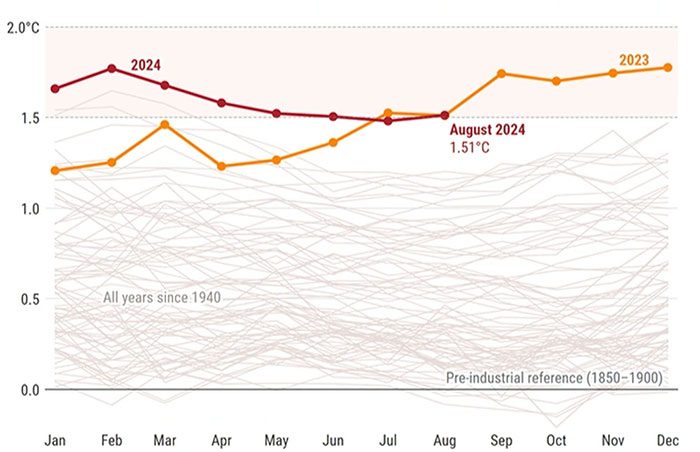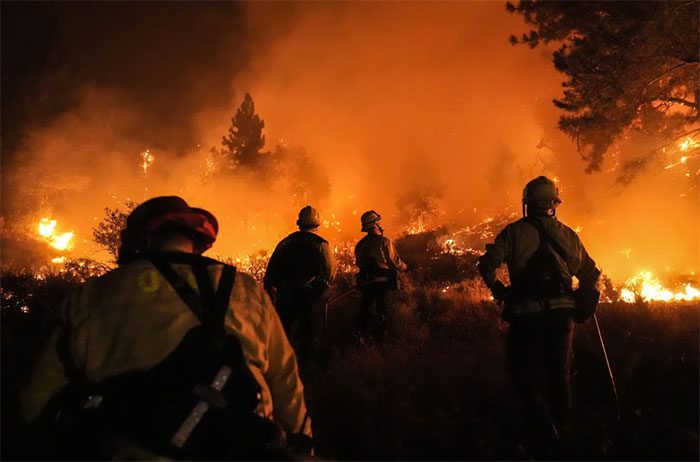A recent scientific study predicts that nearly three-quarters of the world’s population will face extreme weather changes within the next two decades.
Models indicate that more extreme climate changes will continue to occur, potentially even faster than what has been observed in recent years.

Global air temperatures continue to rise to unusual levels, especially compared to the period from 1850-1900 (Photo: CICERO).
This increases the likelihood of dangerous extreme conditions related to heatwaves, storms, and flooding. These events could even occur simultaneously.
For instance, the rise of dry clay combined with drought conditions is leading to more frequent and severe wildfires worldwide. In 2022, a severe heatwave struck Pakistan, followed shortly by unprecedented historic flooding that affected millions.
“Society is particularly vulnerable to the high rate of extreme changes, especially when multiple hazards increase at the same time,” said Bjørn Samset, a physicist representing the research team at the Center for International Climate Research (CICERO).
“If we continue on our current path, these dangerous changes will impact 70% of the world’s population,” the study emphasizes. “In the most plausible scenario, we estimate that rapid climate changes will affect at least 1.5 billion people.”
Data from the European Copernicus Climate Agency indicates that the Earth has just experienced the hottest summer on record in the Northern Hemisphere. Not only that, the Southern Hemisphere is also experiencing a record warm winter.

Firefighters monitor a wildfire in California on September 10 (Photo: AP).
The aforementioned increase in global temperatures has led to wildfires, flooding, tropical storms, and droughts, causing severe damage to crops, leading to an expanding hunger crisis and the spread of diseases.
Among these, heatwaves can cause heat stress and high mortality rates in both humans and livestock, affecting entire ecosystems, reducing agricultural productivity, and disrupting transportation.
On the other hand, extreme rainfall can lead to flooding and damage to settlements, infrastructure, crops, and ecosystems, increasing erosion and reducing water quality.
“Like people living in war zones with the constant sound of bombs and gunfire, we are becoming ‘deaf’ to the alarms and warnings from threatened ecosystems,” described Jennifer Francis, a climate scientist from the Woodwell Climate Research Center.
Experts believe that we can only mitigate part of this impact by reducing greenhouse gas emissions – an area where there has yet to be any significant progress.


















































